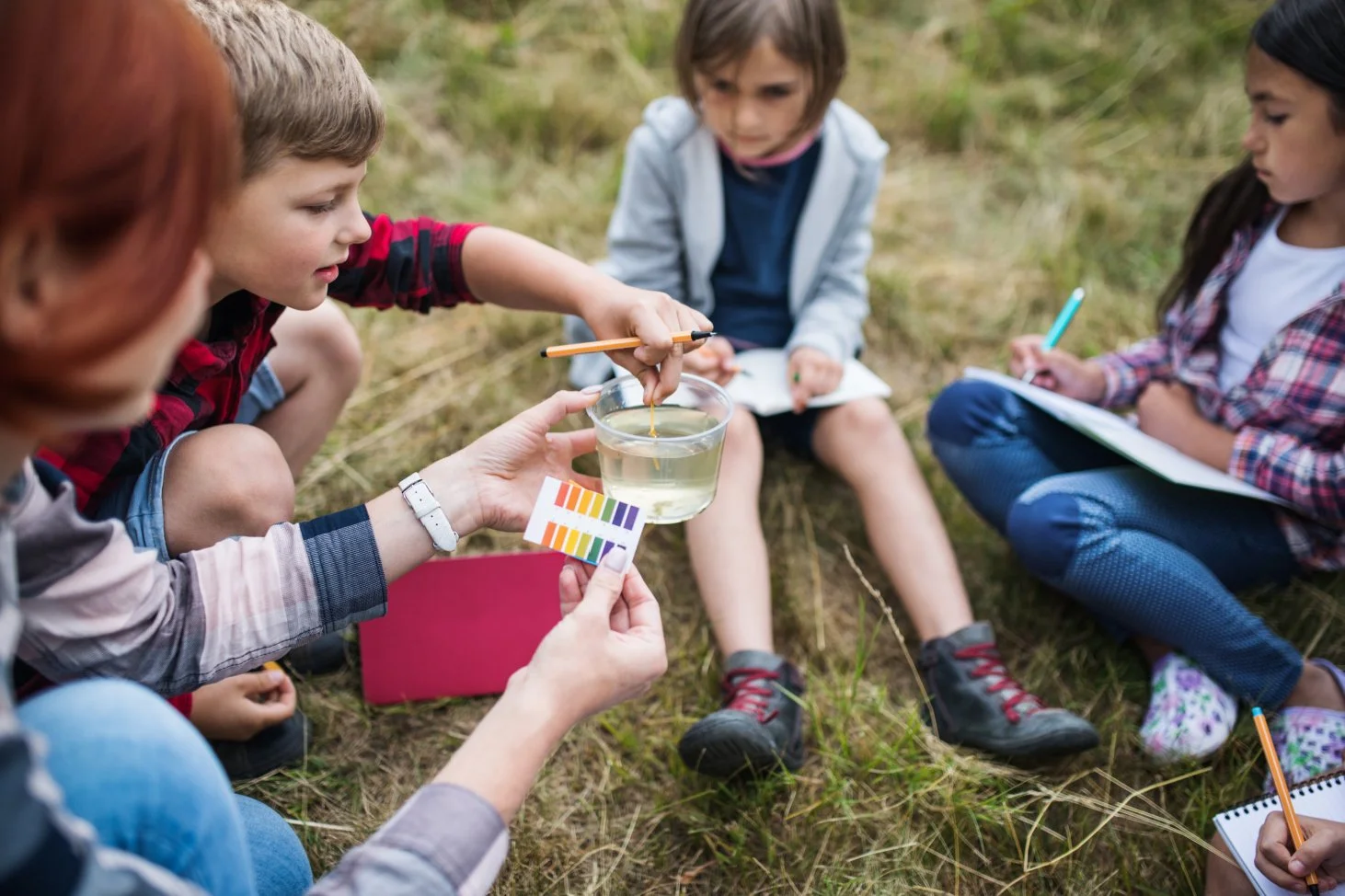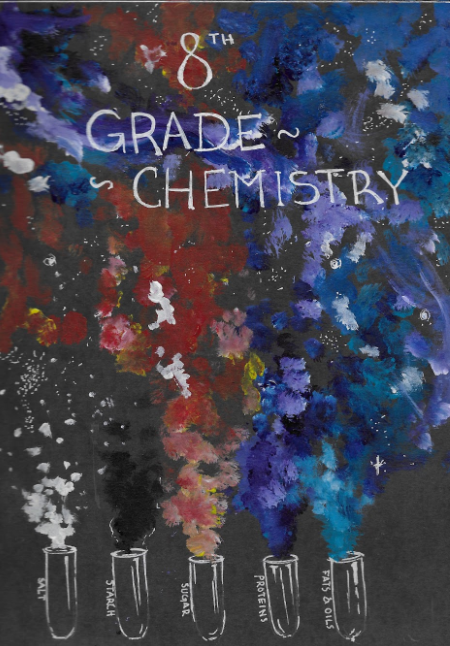3 Tips: Teaching Waldorf Science Curriculum
Science is woven into Waldorf curriculum from the very start of first grade. Formal science curriculum in Waldorf education begins in sixth grade, and opens a brand new world for the students, and also for the educator.
Waldorf science is taught using a phenomenological approach, which emphasizes the direct observation and exploration of the natural world through one’s senses. For the educator, teaching science curriculum includes in-class demonstrations, hands-on experiments, and an engagement of the senses through real life experiences.
Science comes to life through doing and observing.
Science curriculum can often be enjoyed anywhere, especially in nature!
The educator’s role when teaching science is to create opportunities for the student to observe and experience phenomena of the natural world, and eventually, discover the laws of the natural world that exist all around us.
Luckily, the phenomenological method provides a structure that supports the educator; truly, with a little preparation, the natural world provides everything the child needs to deepen their understanding and connection to the scientific world!
How can the educator approach teaching science curriculum?
How can they best prepare and structure instruction time to make the most of the demonstrations?
How can the educator inspire their students to use their observation skills to make conclusions about the natural laws of science?
We’ve got three tips…
1. Prep and Practice
Teaching science requires a lot of supplies- more so than probably any other subject in Waldorf education! Depending on the scientific subject, one may need candles, a blow torch, organic material, baking supplies and ingredients, room darkening materials, and so on.
Teaching Waldorf science can be fun and meaningful, for the student and educator alike!
Luckily, nearly all of the supplies needed for Waldorf science are easily accessible; most are readily available at your local hardware stores, online shopping, or even in your own house and pantry! Getting it all together requires just a little planning and organization.
All of these supplies can become a distraction to the students (it’s new and exciting! Who can blame them?!) so the goal is to have the “stuff” be the secondary focus- we want what the stuff is doing to be the focus!
Therefore, its most ideal if the educator can prep and practice the demonstrations BEFORE doing it in front of the students.
Now, we’re the first to say- this may sound like a lot!
But a well practiced, hands-on demonstration will ensure the focus is on the scientific law being shown, and the distraction of the supplies will simply fade away.
Our Physics (grade 6-8) and Chemistry (grades 7-8) courses are built for the educator: they are designed for you to learn HOW to present science in a phenomenological way, from start to finish.
Our instructor, Ari Magruder, taps into her decades in the classroom and prepares you for possible difficulties you may encounter in the demonstrations. Practicing ahead of time gives you time to make adjustments, and ultimately, gives you the practice you need to gain confidence!
Our courses not only give you detailed supply lists (everything you need!) for the full curriculum, but also show you how to do each and every experiment, along with discussion questions, review activities, and more.
2. Show, Don’t Tell
As educators, we are used to using our voices to teach- storytelling, explaining, presenting lectures, and more!
But when it comes to teaching science, it’s important that the educator allows the student to build their own skills in observing an experiment or demonstration.
Motors are explored in Waldorf eighth grade science curriculum- from the “whole” to the “parts”, and back again!
For example, when an educator is demonstrating how various organic materials burn (usually found in grade 7 chemistry), it’s important to allow the process to unfold in front of the student, without commentary or explanation from the educator (or other students for that matter!)
We want the students to notice the smells of different materials burning, to see which ones burn faster than others, and so on- we want their senses to light up!
The educator should allow the students to be fully engrossed in what is happening in front of them, and not break the spell by talking too much.
A simple narration of, “I have these materials in this fire-safe basin, and I am now going to use this match to light them…” is enough; the students can use their own observations from there.
3. Guide, Don’t Give
After a demonstration has been conducted, the educator should guide the student to reaching a conclusion, and not simply hand them the explanation for what the demonstration showed.
We want the student to use their observations to reach the conclusion on their own!
A vibrant example of a science main lesson book page; art and science working together!
For example, after a student has observed the demonstration which shows the conductivity of various metals (found in the sixth grade physics curriculum) the educator and students can discuss the process, and the cause and effect of what was observed.
Again, the educator is the guide here- they are not giving any explanation of the “whys” of the experiment, but allowing the student to reach the “why” on their own.
The educator can ask questions to guide the conversation…
“What did the experiment look like set-up, before we began? What did I do first to begin the experiment? What did you notice first? Did you see/smell/hear something? What does that observation tell you? Why?”
Giving away a conclusion does not engage the students’ senses or observation skills, therefore, we must guide them instead!
As always in Waldorf education, nature serves as a boundless source of inspiration, and when we teach through phenomenology, we allow nature to be the true teacher of scientific law. Educators play an important role in fostering their students’ observational skills and developing a connection to nature, especially with some preparation and practice, intentional communication, and pointed guidance.
About the Authors
Robyn Beaufoy is Waldorfish’s CEO, and a course instructor. You’ll find her intuitive touches and influences throughout everything Waldorfish offers! Robyn has been in the world of education for over 25 years, with an MA in Education and a certification in Waldorf teaching - she also homeschooled both of her children. In 2012 Robyn co-founded Waldorfish.com, creating it with the vision of making Waldorf inspired-art and pedagogy more accessible, joyful, and doable for homeschoolers all over the world.
Caitlin Amajor is Waldorfish’s course instructor for Geometry grades 5 & 6, and Botany, as well as our Administrative Assistant. From a young age, Caitlin has been immersed in Waldorf education, attending a Waldorf school from K-8. After receiving a BA in History, Caitlin gained her certification in Waldorf teaching, and spent seven years as a Waldorf class teacher in the upper grades. With a special fondness for watercolor painting and geometry, Caitlin loves bringing Waldorf education to her students all over the world, and seeing their own individuality and style bloom from the curriculum!




